Shanghai, China
+86-17317656853
inquiry@cgprotection.com


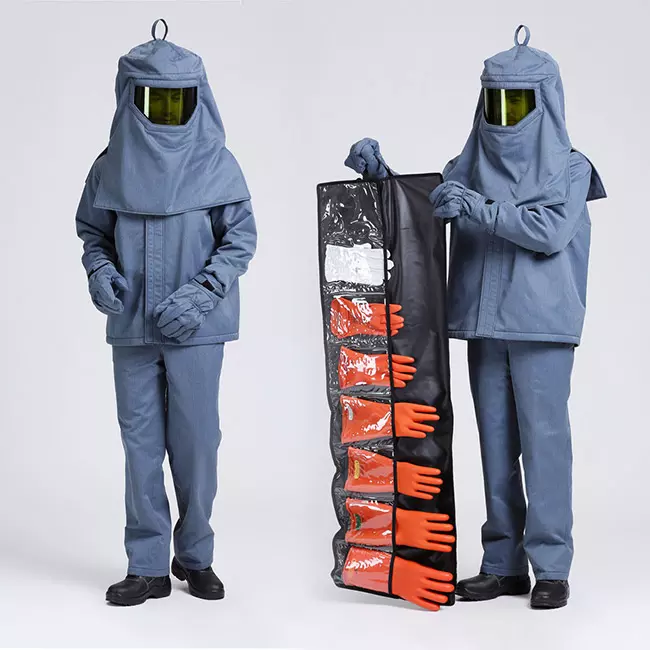
An Arc Flash suit consists of the following products – ARC Flash Hood, ARC Flash Jacket, ARC Trousers, ARC Flash gloves and protective boots. Our lightweight and ventilated arc flash switching hood, 4, ATPV 44 cal/cm2. One piece shaped arc flash switching hood, internal dielectric hard hat and large viewing face shield, ATPV rating indicated on hood.

NOMEX Arc Flash Suit c/w Vented Hood (40 cal/cm²)
Arc flash clothing is intended to provide protection from thermal effects of arc flash and this product must be used as part of an appropriate set of PPC and PPE to protect against the hazards of arc flash. This product complies with standards that are intended to protect against arc flash in most situations that arise in normal use. There may be exceptional cases in which even the best protection is not enough to prevent the harm caused by arc flash or the related effects and, although the product meets statutory and industry specifications, the use of this product does not guarantee that the product will provide complete protection in those exceptional cases. If you are in doubt or do not fully understand these limitations, contact the manufacturer for full information. The product may be returned to the supplier if you are not willing to accept a product that is subject to the limitations set out above. The normal life span of the Arc Shield is one (1) year of outdoor service and two (2) years of indoor service. The Arc Shield should be replaced timeously to ensure optimal performance and safety. 1 ATPV: Arc Thermal Performance Value. The higher the value, the more insulated one is from second degree burn 2 HAF: Heat Attenuation Factor. The higher the HAF%, the more heat is blocked by the fabric.
The protection provided from NOMEX Arc Flash suits gives a person the benefit of a few seconds to escape the Arc flash, by preventing the burning of skin. The main characteristic of NOMEX material is to self extinguish. (inflammable).
NOMEX material is light in weight, does not support combustion, but begins to char at 700° to 800 °F. The fabric, similar to nylon, is abrasion resistant, and is also non-absorbent.
NOMEX Arc Flash suites should always be worn when operating high voltage systems for example 11kv, 22kv or 33kv systems in applications such as switchgear inside C&Gs. (eg. 132kv/11kv) This is to protect against the potential hazard of an arc flash.
NFPA 70E-rated arc flash protective clothing and electrical arc flash hazrd kits are a safety requirement for employees working on or near energized industrial equipment. We carry a wide selection of 70E Arc Flash HRC 1, HRC 2, HRC 3, and HRC 4 kits, arc flash coveralls, arc flash coats, arc flash jackets, arc flash electrical safety gloves, and accessories by NSA National Safety Apparel, Workrite, Steel Grip, OEL Worldwide and other leading electric protective apparel manufacturers.
Anchortex Corporation is a distributor of Hazard Risk Category 1, Hazard Risk Category 2, Hazard Risk Category 3, and Hazard Risk Category 4 arc flash protective gear for industrial and electrical safety and NFPA 70E compliance in the workplace, including gloves, hoods, coveralls, coats, and complete arc flash suits and arc flash kits. Many of our products can be customized by the manufacturer upon request to add NFPA 70E-safe logos and emblems; contact our sales department for more information.
The following are the NFPA 70E compliance requirements for arc flash protection:
Minimum Clothing Requirements for NFPA 70E Compliance
| HRC | Protective Clothing | Minimum Cal/cm2 | Additional Personal Protective Equipment Required |
| HRC -1 | Natural fiber short-sleeved shirt and long pants | N/A | Safety Glasses, Leather Safety Shoes, Hard Hat |
| HRC 0 | Natural fiber long-sleeved shirt and pants | N/A | Safety Glasses, Leather Safety Shoes, Hard Hat |
| HRC 1 | Denim jeans and arc-rated FR long-sleeved shirt OR arc-rated FR long-sleeved shirt and pants OR arc-rated FR coveralls | 4 | Safety Glasses, Leather Safety Shoes, Hard Hat, Arc-Rated Face Shield |
| HRC 2 | Arc-rated FR long-sleeved shirt and pants OR arc-rated FR coveralls | 8 | Safety Glasses, Leather Safety Shoes, Hard Hat, Arc-Rated Face Shield (ASTM recommends 8+ cal/cm2 stocking hood ORmulti-layer switching hood in certain circumstances) |
| HRC 3 | Multi-Layer arc flash suit over arc-rated FR long-sleeved shirt and pants over natural fiber short-sleeved T-shirt and pants OR Multi-Layer arc flash suit over arc-rated FR coveralls over natural fiber short-sleeved T-shirt and pants | 25 | Safety Glasses, Leather Safety Shoes, Hard Hat, Multi-Layer Switching Hood, Hearing Protection, OR Arc-Rated Goggle and Stocking Hood |
| HRC 4 | Multi-Layer flash suit over arc-rated FR long-sleeved shirt and pants over natural fiber short-sleeved T-shirt and pants OR Multi-Layer flash suit over arc-rated FR coveralls over natural fiber short-sleeved T-shirt and pants | 40 | Safety Glasses, Leather Safety Shoes, Hard Hat, Multi-Layer Switching Hood, Hearing Protection, OR Arc-Rated Goggle and Stocking Hood |
The following information is provided by VF Imagewear, manufacturers of Bulwark FR arc flash protective apparel, as a convenience and for informational purposes only, and does not constitute a warranty or guarantee of any kind. Anchortex Corporation recommends that you undergo a full NFPA 70E hazard / risk evaluation and training program for your workplace and takes no responsibility for any actions taken based on the information presented here.
NFPA 70E - STANDARD FOR ELECTRICAL SAFETY REQUIREMENTS FOR EMPLOYEE WORKPLACES
National Fire Protection Association (NFPA) Standard 70E, 2009 Edition, became effective September 5, 2008. This American National Standard addresses electrical safety requirements for activities such as operation, repair or demolition of exposed energized electrical conductors or circuit parts. This standard covers virtually all aspects of workplace electrical safety, recognizing hazards associated with the use of electrical energy, and taking precautions so that hazards do not cause injury or death.
The 2009 Edition eliminated Chapter 4 on Installation Safety Requirements because it was a duplicate of National Electrical Code installation requirements. Other changes addressed host employer/contract employer responsibilities. The host employer is responsible for advising the contractor of known hazards and other information about the work site. The contractor employer is responsible for instructing his/her employees in the hazards communicated by the host employer and for ensuring that the contract employees follow required rules and work practices.
The employer must implement and document an overall electrical safety program that directs activity appropriate for the voltage, energy level and circuit conditions. This includes hazard/risk evaluation and job briefing procedures and must be audited annually. Employees must be qualified to do the work and trained to understand the specific hazards and potential injury associated with electrical energy. Employees exposed to shock hazards must be retrained annually in cardiopulmonary resuscitation.
WHAT EMPLOYERS NEED TO KNOW
NFPA is a national consensus standard that establishes best practices for protection from electric arcs.
Employers must conduct both shock and flash hazard analysis to establish a flash protection boundary.
If energized electrical conductor or circuit parts operating at 50 volts or more are not placed in an electrically safe work condition within the Limited Approach Boundary, written authorization by work permit is required. In addition to a description of the circuit and equipment, other requirements must be implemented including Lockout/Tagout devices, a shock hazard analysis and a flash hazard analysis. An exception for the work permit requirement was added for tasks involving visual inspection.
When work will be performed within the Flash Protection Boundary, the employer must document the incident energy exposure in calories per square centimeter. Arc rated clothing and PPE must be worn either based on the incident energy determined for the specific task or by using Table 130(C)(9) to determine the hazard/risk category. Job briefing procedures and must be audited annually.
Annex H provides a simplified approach to select appropriate arc rated clothing and PPE based on whether the task requires 'everyday work clothing' or 'electrical switching clothing'.
THREE STEPS TO COMPLIANCE WITH NFPA 70E
Implement and Document an Overall Electrical Safety Program
The employer must implement and document an overall electrical safety program that directs activity appropriate for the voltage, energy level and circuit conditions. This includes hazard/risk evaluation and job briefing procedures and must be audited annually. Employees must be qualified to do the work and trained to understand the specific hazards and potential injury associated with electrical energy. Employees exposed to shock hazards must be retrained annually in cardiopulmonary resuscitation.
Determine PPE Based Incident Energy Task, or from Table 130.7(C)(11)
| Hazard Risk Category | Clothing Description | Minimum Cal/cm2 |
| HRC 1 | Arc-rated FR shirt and FR pants or FR coverall | 4 |
| HRC 2 | Arc-rated FR shirt and FR pants or FR coverall | 8 |
| HRC 3 | Arc-rated FR shirt and pants or FR coverall, and arc flash suit selected so that the system arc rating meets the required minimum | 25 |
| HRC 4 | Arc-rated FR shirt and pants or FR coverall, and arc flash suit selected so that the system arc rating meets the required minimum | 40 |
SELECT PPE (PERSONAL PROTECTIVE EQUIPMENT)
Employees must wear arc rated clothing wherever there is a possible exposure to an electric arc flash above the threshold incident-energy level for a second degree burn (1.2 cal/cm2). Conductive items such as jewelry, necklaces, etc. may not be worn where they present a contact hazard. Clothing made from synthetic materials that melt such as nylon, polyester, polypropylene and Spandex may not be used unless such blends meet the requirements of ASTM F 1506 and do not exhibit melting and sticking during arc testing.
Be aware that other PPE may be required for specific tasks including hearing protection, voltage-rated tools and gloves, etc.
FREQUENTLY ASKED QUESTIONS
+ Who is covered?
Employees during activities such as operation, maintenance and demolition of exposed energized electrical conductors or circuit parts. Research shows that approximately 10% of the employees in any operation work as electricians, maintenance, or other categories of work covered by this standard.
+ Does OSHA enforce NFPA 70E?
OSHA believes that the NFPA 70E standard offers useful guidance for employers and employees attempting to control electrical hazards, but OSHA has not conducted a rulemaking and therefore does not enforce NFPA 70E. OSHA does use consensus standards such as NFPA 70E as evidence of hazard recognition in evaluating General Duty Clause violations.
+ Where can I get a copy?
NFPA 70E is available from NFPA, 1 Batterymarch Park, P.O. Box 9101, Quincy, MA 02269-9109; phone: 1-800-344-3555; or on-line at http://catalog.nfpa.org.
+ What is ATPV; EBT?
The standard requires that arc rated garments have a minimum Arc Thermal Performance Value (ATPV) based on the hazard/risk analysis for the task being performed. The ATPV is expressed in calories per square centimeter and represents the protection from electric arcs provided by the garment. If the ATPV cannot be calculated because the fabric breaks open, the energy causing the break open is expressed as the Breakopen Threshold Energy (EBT).
+ Where do I find arc ratings?
Arc ratings are included on arc flash garment labels as well as on the specifications for each item.
+ I've done the necessary calculations and some tasks require a higher level of protection than is available from single layer garments. What do I purchase?
The total system arc rating of layered ensembles must be determined by a multilayer arc test on the combination of all layers assembled asthey would be worn, rather than adding the arc ratings of the individual layers. Arc ratings of individual layers cannot simply be added together. Any garment worn as the outer layer, including rainwear, must be FR. Electrical switching clothing (flash suits) is available for those needing HRC 3 (25 minimum ATPV) or HRC 4 (40 minimum ATPV). Many insulated outerwear garments also have ATPVs greater than 25. These can be used for specific applications where higher arc ratings are needed. Keep in mind that hearing, head, face and neck protection are also required for these higher exposure levels.
+ There are some really complex calculations in 70E. Do I have to become an electrical engineer to understand the standard?
Arc rated clothing and PPE must be worn either based on the calculated incident energy determined for the specific task or by using Table 130(C) (9) to determine the hazard/risk category (HRC). HRC is specified based on specific job tasks. These range from HRC 0 that allows non-melting flammable materials up to HRC 4 that requires an arc rated FR shirt and pants or FR coverall, and arc flash suit with a minimum system arc rating of 40.
Annex H provides a simplified approach to select appropriate arc rated clothing and PPE based on whether the task requires 'everyday work clothing' or 'electrical switching clothing'.
+ Can those covered by this standard just wear heavyweight non-melting flammable garments such as denim jeans?
Probably not. Non-melting flammable garments are only allowed for
HRC 0 exposures. Employees must wear FR clothing wherever there is a possible exposure to an electric arc flash above the threshold incident energy level for a second-degree burn (1.2 cal/cm2).
+ Can workers continue to wear flammable T-shirts under their arc rated garments?
Layering of non-melting flammable garments is permitted to be worn under FR garments for added protection. However, if Table 130.7(C)(9) is used to determine the HRC category, only FR layers within the layered system are used to determine system arc rating.
C&G Safety is committed to helping workers stay safe on the job. Our Arc Flash Switching Suits help provide protection from burns and heat generated when these unexpected incidents occur on the job, greatly reducing the risk of serious injury. When your team is wearing a switching suit from the C&G Safety Products, you can feel confident that your workers and your company are protected.
Tags:
Shanghai C&G's personal protective clothing and PPE products are trusted by customers in the world. Our products are exported worldwide, with a strong presence in the United States, China, Japan, Germany, the United Kingdom, India, France, Italy, Brazil, and Canada. In addition, we have a significant customer base in other countries across each continent, including Australia, New Zealand, South Africa, Nigeria, and Egypt in Africa; Argentina, Chile, and Mexico in South America; Russia, South Korea, and Indonesia in Asia; Spain, Poland, and Turkey in Europe; and Saudi Arabia and the United Arab Emirates in the Middle East. Wherever you are in the world, we have the products you need to stay safe and protected. Contact us today to learn more about our products and how we can help you meet your safety needs.
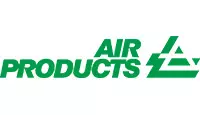

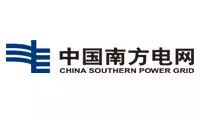
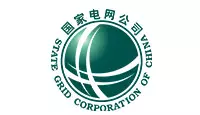
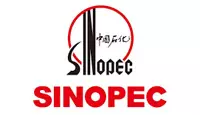


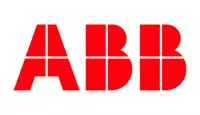
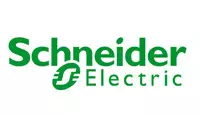
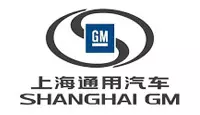
© 2023 Shanghai C&G. All Rights Reserved.